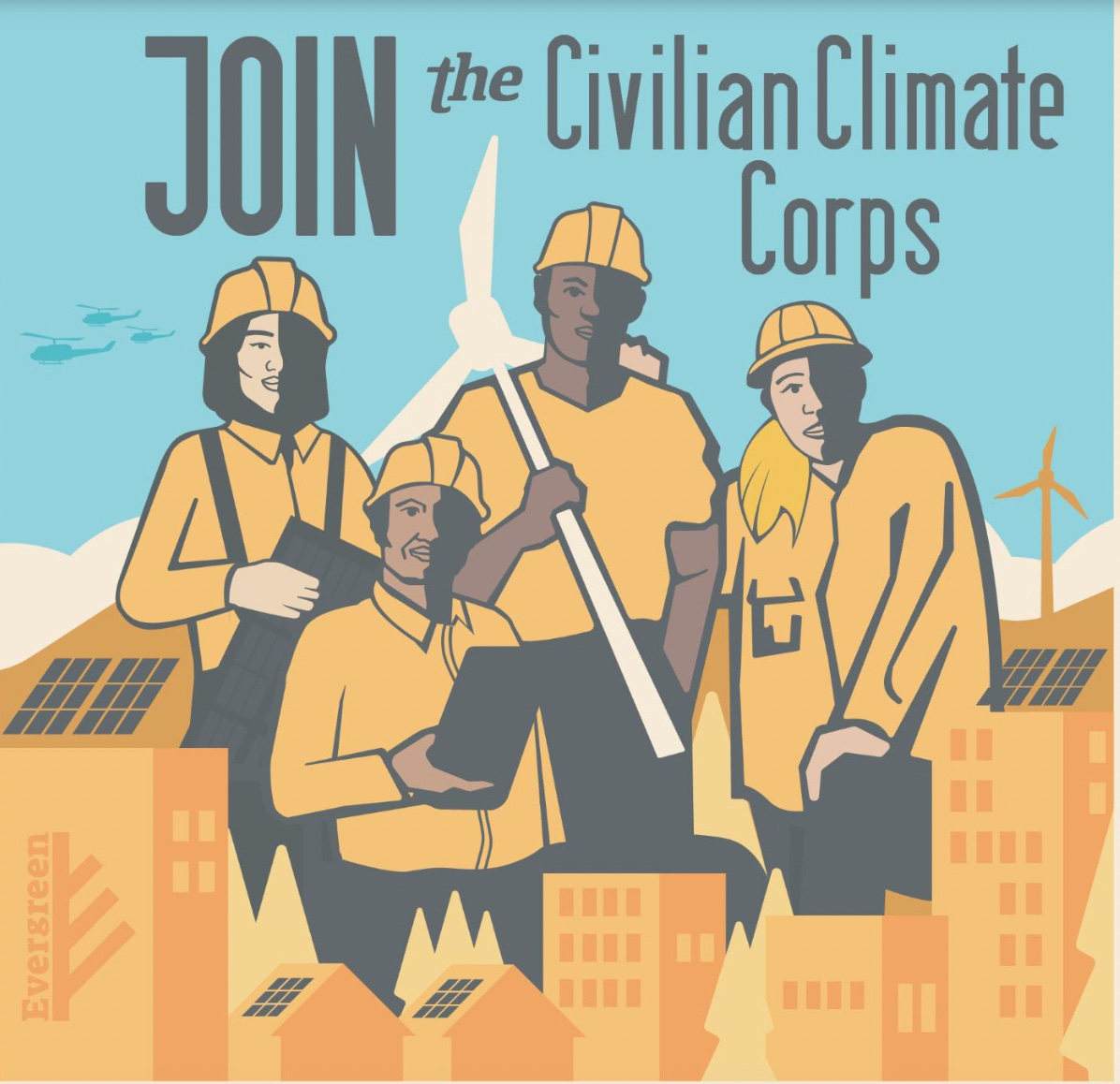What's the deal with the American Climate Corps?
In which my cosplaying as a journalist continues...
Hello, and welcome back to Work Climate! I’m David, and I’m looking forward to keeping this little outlet going this year, but on a once-per-month basis for now (apologies to all adoring fans of biweekly posts). In January, I’ve been wondering if our feeble pretensions of democracy will survive the year. On campus, at least, it feels very possible that enough young people — rightfully disgusted by Biden’s support of Israel’s assault on Gaza — will sit out the election to swing things in November. And it seems enough staffers in Joe’s camp have recognized this dynamic to begin frantically doubling down on the President’s pro-climate agenda, in hopes of winning back The Youth (see the recent decision to pause the expansion of liquified natural gas terminals).
Efforts by the White House to build excitement for the American Climate Corps (ACC) fit this trend. Announced in September, the ACC aims to employ thousands of young people per year in environmental restoration and clean energy jobs, via placements with seven federal agencies. The ACC could, for instance, see high school and college graduates joining the Department of the Interior to carry out conservation projects on tribal lands, or getting certified by the Department of Energy to help electrify our country’s infrastructure.
This is a pretty cool vision, explicitly modeled on the Civilian Climate Corps of FDR’s New Deal, and championed by progressive, pro-Green New Deal presidential candidates and activists with groups like Sunrise Movement. But how will that dream translate into reality? Despite initial claims from the Biden-Harris administration that the ACC will create 20,000 jobs this year, that seems highly unlikely, in part because the Inflation Reduction Act failed to secure specific funding for the program. Instead, federal agencies are coordinating with AmeriCorps to expand existing climate jobs programs.
For example, the Department of Agriculture is launching Forest Corps, “a five-year, $15 million interagency agreement,” which will “conserve national forests and grasslands, mitigate risks of wildfires . . . and support reforestation.” This could indeed be a vital part of planting billions more trees in the United States — but this summer the Forest Corps will only employ 80 people (and at just $15/hour). It’s a start, but, we should admit, a small one.

I don’t want to be too down on the ACC before it has launched, though. The administration claims over 50,000 people have expressed interest in joining up, and there are similar programs run by states, ranging from California to North Carolina, that seem to be doing a decent job giving young people short-term experiences in climate mitigation work. So, to learn more, I joined one of the White House’s “listening sessions” on how the ACC should be designed and deployed (you could call me a journalist, IDK, some people are saying it…).
The session was run by Maggie Thomas, Chief of Staff in the Office of Domestic Climate Policy, who brings experience from the very campaigns and orgs which pushed for an ACC-like program. She was joined by Secretary of Agriculture, Tom Vilsack, and Congressman Joe Neguse, both of whom did their part boosting the administration’s climate accomplishments and commitments to young voters, etc. I have no idea how many other people were listening in, but I was impressed by the stops they have pulled out for these Zooms; other sessions were apparently graced by the likes of AOC.
Still, when we got to the listening part of the session, I only heard Boomers and Gen Xers sharing their disparate (and self-promotional) visions for climate progress. Some of these ideas were pretty good — like coordinating with the Department of Labor to provide certifications that ACC participants could leverage for subsequent federal employment — but they were decidedly not coming from the White House’s desired constituency. So it goes.
Beyond electoral consequences, there are broader questions here, too, about who should be funding and carrying out climate restoration and clean energy work: Governments? Nonprofits? Businesses? Citizens? Labor migrants? I assume, as is the case with so many questions in climate, an all-of-the-above strategy will be adopted in practice. The merits of each I’ll leave for another time, but I do hope the ACC succeeds; to the extent the government pays people to serve their country, better in wetland restoration than the military.
Thank you for reading, I’m excited to continue this project in 2024! Leave a comment or drop a line to creminsdavid@gmail.com with any suggestions :)


I do hope those numbers in the Forest Corps get boosted soon. Also, I clicked on the phrase So it goes, and learn that’s it’s not just a Kurt Vonnegut but also Taylor Swift allusion! Always learning.